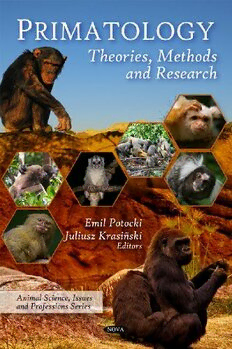
Primatology: Theories, Methods and Research (Animal Science, Issues and Professions) PDF
220 Pages·2010·3.02 MB·English
Most books are stored in the elastic cloud where traffic is expensive. For this reason, we have a limit on daily download.
Preview Primatology: Theories, Methods and Research (Animal Science, Issues and Professions)
Description:
Primates use four major modes of communication (i.e., visual, olfactory, tactile and vocal), and the ways they communicate depend on restrictions imposed by their habits and habitats. This book discusses past, current and potential future research in the wild and captivity, addressing some of the key questions in primate bioacoustics, identifying gaps in our knowledge, and also describing basic methods and equipment used in the study of primate bioacoustics. Also investigated are the changes of circadian rhythm of the hypothalamic-pituitary-adrenal (HPA) axis activity in non-human primates under stress and during ageing. This book presents data collected from gibbons in a sanctuary, a rehabilitation centre and also the wild highlighting the development of social skills and cognitive abilities. In addition, one of the dominant research areas in behavioural primatology pertains to assessments of the cognitive capacities of various non-human primate species. This book outlines studies that compare different methodologies and how those methodologies might contribute to differential learning and cognitive performance. Other chapters in this book examine the cognitive differences between humans and apes, review a powerful experimental methodology to determine the most likely acquisition modes responsible for primate 'cultural' patterns, estimate home range use, activity patterns, and diet in woolly monkeys, and discuss the researchers role in preventing disease transmission between humans and apes.
See more
The list of books you might like
Most books are stored in the elastic cloud where traffic is expensive. For this reason, we have a limit on daily download.
